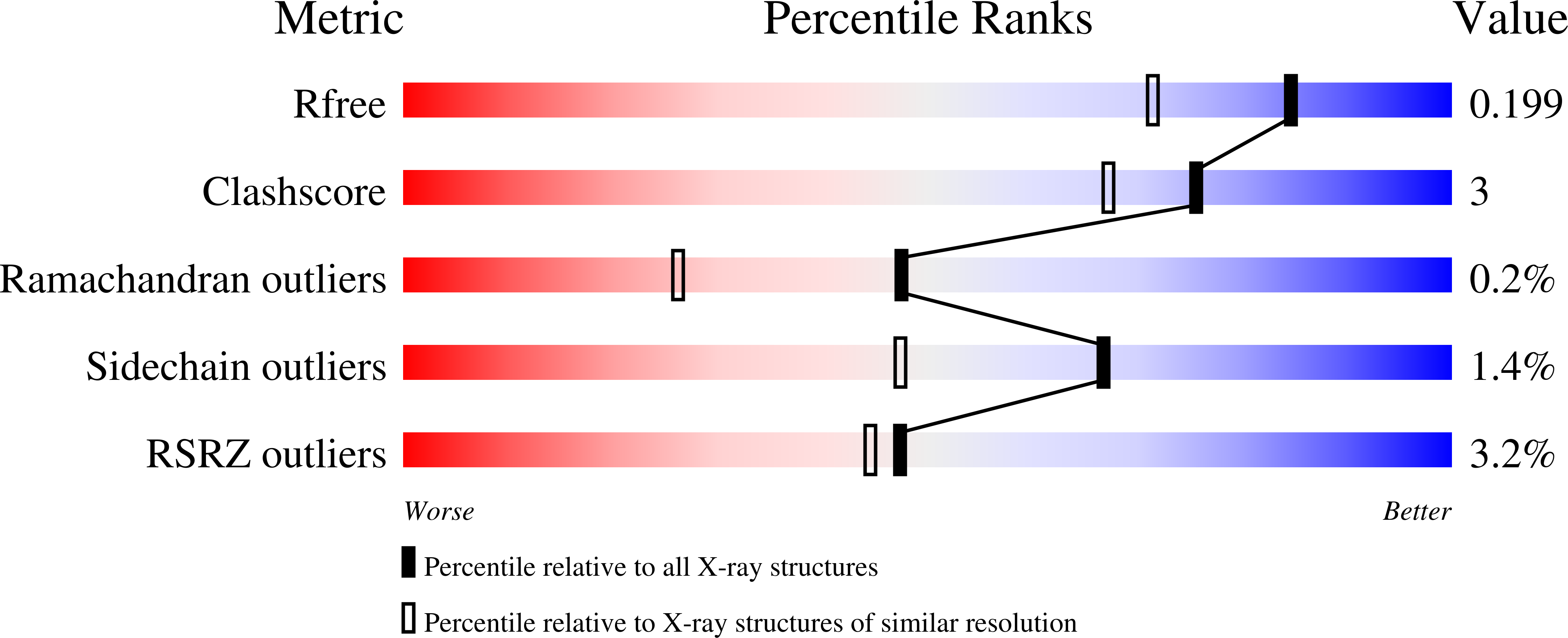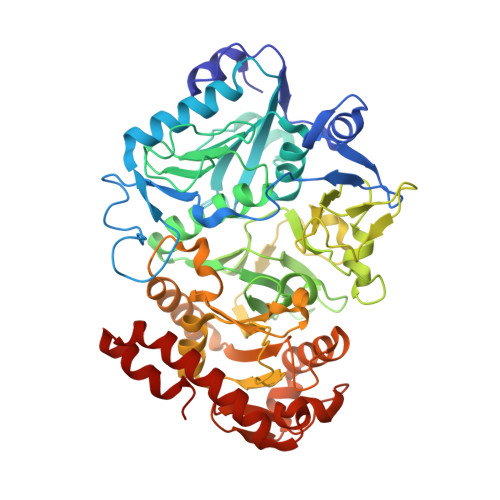How does an enzyme recognize CO2?
Cotelesage, J.J., Puttick, J., Goldie, H., Rajabi, B., Novakovski, B., Delbaere, L.T.(2007) Int J Biochem Cell Biol 39: 1204-1210
- PubMed: 17475535
- DOI: https://doi.org/10.1016/j.biocel.2007.03.015
- Primary Citation of Related Structures:
2OLQ, 2OLR - PubMed Abstract:
Phosphoenolpyruvate carboxykinase (PCK) reversibly catalyzes the carboxylation of phosphoenolpyruvate to oxaloacetate. Carbon dioxide, and not bicarbonate ion, is the substrate utilized. Assays of the carboxylation reaction show that initial velocities are 7.6-fold higher when CO(2) is used instead of HCO(3)(-). Two Escherichia coli PCK-CO(2) crystal structures are presented here. The location of CO(2) is the same for both structures; however the orientation of CO(2) is significantly different, likely from the presence of a manganese ion in one of the structures. PCK and the other three known protein-CO(2) crystal structure complexes have been compared; all have CO(2) hydrogen bonding with a basic amino acid side chain (Arg65 or Lys213 in PCK), likely to polarize CO(2) to make the central carbon atom more electrophilic and thus more reactive. Kinetic studies found that the PCK mutant Arg65Gln increased the K(M) for substrates PEP and oxaloacetate but not for CO(2). The unchanged K(M) for CO(2) can be explained since the Arg65Gln mutant likely maintains a hydrogen bond to one of the oxygen atoms of carbon dioxide.
Organizational Affiliation:
Department of Biochemistry, University of Saskatchewan, 107 Wiggins Road, Saskatoon, Sask., Canada.


















